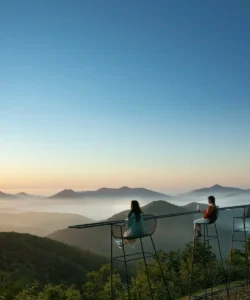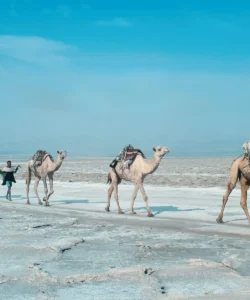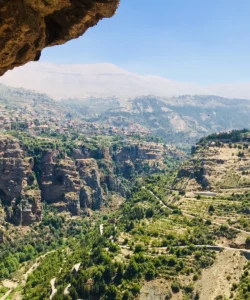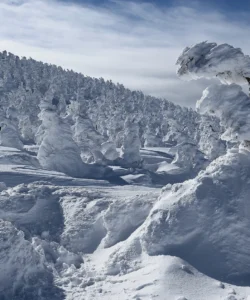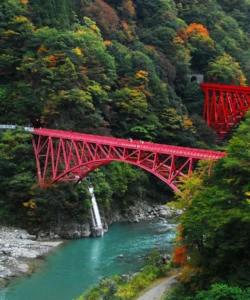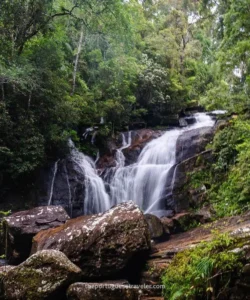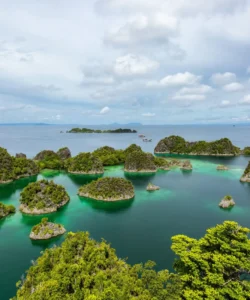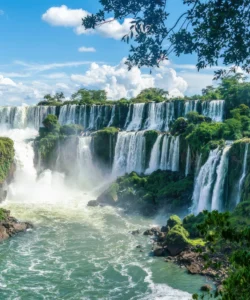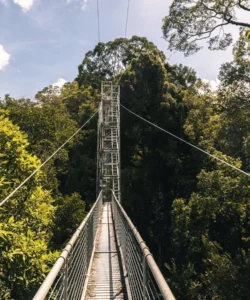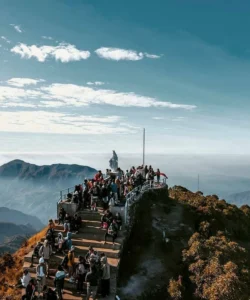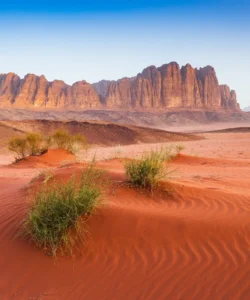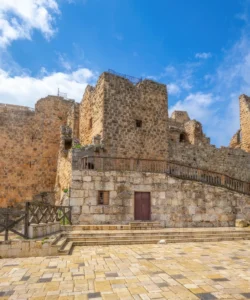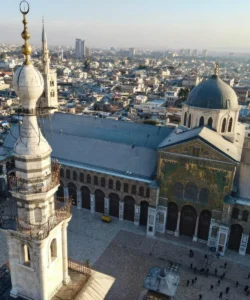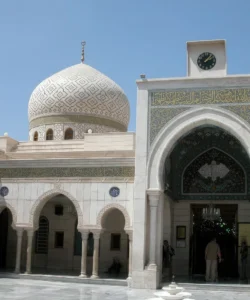Wadi Rum, also known as the “Valley of the Moon,” is a vast and breathtaking desert valley in southern Jordan. It is a UNESCO World Heritage Site and is celebrated for its stunning natural beauty, unique rock formations, and rich cultural history, which is tied to the local Bedouin communities and historical figures like T.E. Lawrence.
Listen to an introduction about Wadi Rum Protected Area
Name and Address
- Name: Wadi Rum Protected Area (Arabic: وادي رم, Wādī Ramm), commonly nicknamed the “Valley of the Moon.”
- Address: The Wadi Rum Protected Area is located in southern Jordan, near the port city of Aqaba. The main visitor center is the entry point for exploring the protected desert wilderness.
How to Get There
Wadi Rum is a popular destination and is accessible from major cities in Jordan.
- From Amman: The journey from Amman to Wadi Rum takes approximately 3 to 4 hours by car or bus. Options include hiring a private taxi or car, taking a tourist bus service, or joining an organized tour.
- From Aqaba: Being closer to Aqaba, the drive is much shorter, taking about 1 to 1.5 hours. Similar options are available, with many visitors opting for a day trip or an overnight stay from Aqaba.
- From Petra: It is also a popular route to travel from Petra to Wadi Rum, which takes about 1.5 hours by car. Many tours combine these two iconic Jordanian sites.
Landscape and Architecture
Wadi Rum’s landscape is an awe-inspiring vista of dramatic natural formations rather than man-made architecture.
- Stunning Desert Landscape: The protected area features a unique landscape of red and orange sand dunes, towering sandstone mountains, and striking granite cliffs. The desert is a vibrant tapestry of colors that change throughout the day.
- Natural Rock Formations: The landscape is dotted with natural arches, dramatic rock bridges, and narrow gorges carved by wind and water over millennia. These formations, such as the famous Burdah Rock Bridge, are a major highlight.
- Ancient Inscriptions and Petroglyphs: The rocks and cliffs are inscribed with ancient rock carvings and Thamudic petroglyphs, offering a glimpse into the history of early human presence in the region.
- Bedouin Camps: As part of its living cultural heritage, the desert is home to local Bedouin tribes who live in traditional camps. Many of these camps offer overnight stays for tourists, providing a cultural experience.
What Makes It Famous
Wadi Rum’s fame is a combination of its natural grandeur, historical significance, and a strong presence in popular culture.
- “Lawrence of Arabia”: The area is famously associated with British officer T.E. Lawrence, who based his operations there during the Arab Revolt of 1917–1918. His book, Seven Pillars of Wisdom, and the iconic film Lawrence of Arabia, were largely set in this desert, cementing its legendary status.
- UNESCO World Heritage Site: The area was designated a UNESCO World Heritage Site in 2011 for its mixed natural and cultural heritage.
- “Mars on Earth”: Its otherworldly landscape of red sand and unique rock formations has made it a popular filming location for movies set on Mars or other alien planets, such as The Martian and Dune.
- Bedouin Culture: The area is celebrated for its vibrant Bedouin culture, which has adapted to life in the desert for generations, offering visitors a chance to experience traditional hospitality, camel rides, and desert camps.
Differences from Some Other Wonders (e.g., Petra)
While Petra and Wadi Rum are both in southern Jordan and are often visited together, they represent two very different types of wonders.
- Nature vs. Man-Made: Wadi Rum is primarily a natural wonder, a vast desert landscape shaped by natural forces over millions of years. Petra, in contrast, is an archaeological wonder defined by the man-made, rock-cut architecture of the Nabataeans.
- Architectural Focus: In Petra, the key features are the elaborate façades and buildings meticulously carved into the rock. In Wadi Rum, the focus is on the raw, monumental beauty of the desert’s natural features, such as mountains, dunes, and canyons.
- Experience: Visiting Petra is a journey through a city of the dead, exploring tombs and temples. Visiting Wadi Rum is an immersive adventure in a living desert, often involving jeep tours, camping under the stars, and experiencing Bedouin culture.
Wadi Rum Protected Area Photos:
































